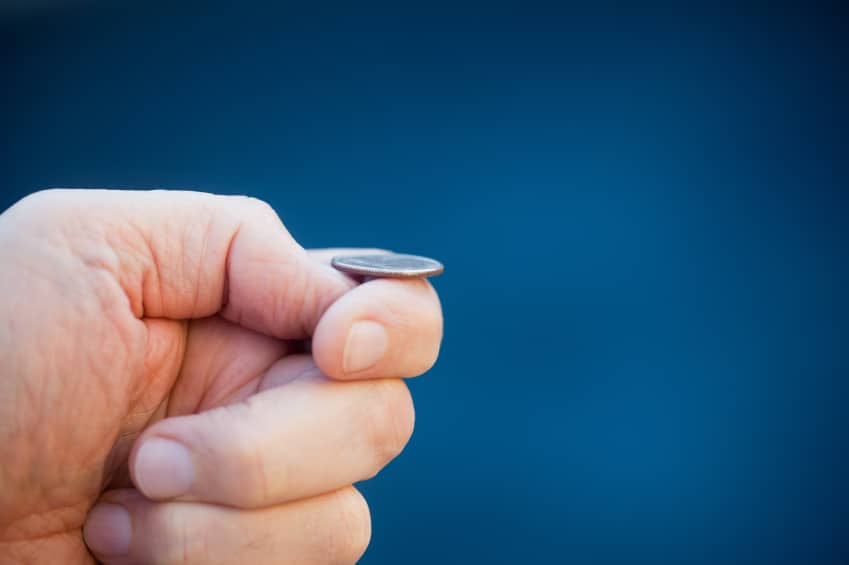Working With Failed Trades & Your Trading Mindset

There is a statement non-profitable traders often use regarding some of their losses. Perhaps you have heard this before, or said this yourself (myself included years ago).
It is the commonly used term ‘Failed Trades‘, which is something of a misnomer. In reality, there are no ‘Failed Trades‘. In fact, there are only three types of outcomes from any single trade, and they are not the win/break-even/loss you are thinking of.
These three types of outcomes from any single trade are; winning, learning, and failing to learn from. The idea of a ‘failed trade‘ is the latter – that being one you failed to learn from.
However the very mention of the term ‘failed trades‘ brings up something crucial about our trading mindset. That is – we cannot define ourselves by our last few trades, whether they made money or not. Think about it like this;
What if you are 50% accurate, and generally scoop up 1.25R per winner? According to the risk of ruin, that level of accuracy, risking 1% per trade (and R won per trade) will mathematically make you money.
Another perspective around this would be to examine coin flips. How so?

You can flip a coin 10,000x and end up with 50% heads and tails. Yet…inside that 10,000 rounds of flipping, you may have 7 heads in a row. Now what if during those 7 heads you were betting tails each time? Would you call that a failure to bet wrong 7x? Probably not, yet its perfectly natural to have moments of random distribution like that, even in a coin flip.
Translation: you will have losing streaks which will be part of trading. You will also have ‘hot streaks‘ which are part of the same process. These winning and losing streaks come via any natural distribution curve. Individually, they’ll look like streaks, but in reality, this is an illusion, because they are statistically going to happen. Which is why we have to focus on something else.
A Students Trading Process: From 8%-38%
I recently had a student (we’ll call him Michael) who wanted to trade an anti-podean currency (Kiwi vs. the USD) as it worked for his availability. When he first started training with the pair on Forex Tester 2, doing live forward simulation training, his accuracy was a whopping 8%. Yep, you read that right, he was only accurate 8 out of 100 trades.
A month later, Michael was now 28% accurate. I just received an email from him showing me his myfxbook stats. Where is Michael at now? Currently clocking in at 38% percent. Maybe I should call him the crazy eights trader!
(NOTE: To get a $50 discount on Forex Tester 2, click here)
Now when you look at his trading over time, what you can see is the evolution of his trading via focusing on the process (not results). He is evolving over time and continually getting better. If you define yourself by your last two to three trades, you are focusing on a see-saw, which, technically could oscillate with a loss following every win forever!
By focusing on process, and your trend in terms of your overall trading process, you get a better handle on what you actually are – which is on a sliding scale. In other words – a moving target!
Michael kept his eye on the ball, and because of that, his process and performance is getting better. He’s constantly improving his execution, timing, and his read on the price action context. By getting better at reading the price action in real time, he’s noticing a steady uptick in his accuracy. His last two trades will never represent all the effort he’s gone through thus far, and more importantly – where he is going.
But He’s Losing Money…
Now you may think, ‘big deal, he’s still only 38% accurate, which is losing money.‘ Call it a guess, but I’m willing to bet at least 60+% of you thought 38% accuracy is poor in terms of trading, and that Michael was losing money. That would be true if his average R was +1 per trade. But he is generating over +2.5R per trade, which means Michael is making money consistently.
And now that he’s making money, is he just sitting there content with what he’s got? No – like a track runner constantly working to reduce his time, he is constantly refining his edge wherever he can find it. He is using the Aggregation of Marginal Gains, where every 1% edge adds up to a large result.
In Closing
We can now see there are no failed trades – there are only trades we fail to learn from. By focusing on process, and not the see-saw of the last 2 or 3 trade outcomes, we keep our eye on the target
We can now understand how hot and cold streaks are a common part of our trade distributions, so getting bent out of shape by a few losing trades means nothing. What is more important is having a successful trading mindset, which is focused on constantly improving and building our skill set.
When we do this, we will find ourselves making better decisions, worrying less about the outcome of each trade, and making more profitable trading decisions.


Great article Chris and a reminder to concentrate on the process and not the last couple of trades,something i think we are all prone to do,myself certainly !
Hello Rob,
Yes, many people are prone to this, and I used to make this mistake all the time when I was focused on the wrong things. It is easy to lose perspective on this and get caught up in having our measuring stick be the last trade, the last pass or the last free throw. We must learn to see trading in a broader perspective, and not emotionally invest so much in the last few trades because we have no idea how they will turn out. Yet overall, our strategy could still make a lot of money regardless of our last few trades.
This is the key point.
Kind Regards,
Chris Capre
Nice article Chris…like the quote very much “These three types of outcomes from any single trade are; winning, learning, and failing to learn from”
Hello Raja,
Yes, and in reality – all three types of outcomes should be considered learning opportunities. So nice spot there and glad you liked the article.
Kind Regards,
Chris Capre
Fascinating. Does your PA course include any mt4 indicators or is it naked PA patterns only? Is there a detailed list of contents somewhere?
Hello Fredrik,
I’ll email you a more thorough response.
Kind Regards,
Chris Capre
Hi Chris
as usual great learning chapter in the mindset section
thanks
regards
sahaj